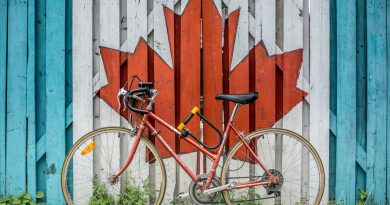Flattening the Curve: Pandemic Response and the East-West Dichotomy
Daniela Maquera
Staff Writer
When China announced that its two-month lockdown, border shutdown, and intense police surveillance had lowered the country’s rising number of coronavirus cases, it shocked the world. Many western countries did not think it possible to imitate China’s methods: many called them draconian and looked elsewhere. However, in Asia, Singapore, Hong Kong, and Taiwan took a different approach. Recalling lessons learned from the aftermath of the 2002 SARS outbreak, despite their close links to mainland China, they chose to sacrifice that relationship for health and cut ties with the virus’ source.
Many states considered their measures extreme. Even when the WHO did not consider “travel bans” necessary, these three regions had already restricted passengers coming from the mainland. According to Time, their strategy cost trade and tourism revenue coming from China. However, in the long-run, their proactive prevention has made them the almost-certain winners in the fight to contain COVID-19.
Putting aside these countries’ different regimes, the open and honest interaction of government officials and health experts with citizens has led to clarity. Through effective communication and free testing, governments continue to alleviate the civilian economic and health burden. Singapore tests every case of influenza-like illness and tracked contacts of possibly infected patients. Taiwan combined its national health care and immigration databases to generate automated travel alerts. South Korea and Japan both adopted measures of strict social distancing once the spread began. According to Wired, these countries used prior experience with outbreaks to build health systems with strong countermeasures and activated them “before the bomb exploded.”
Strict surveillance plays a big role in containing the number of cases in these Asian countries, although the main driver of their effective response is the rapid development of testing. According to The Lancet, once the genetic sequences for COVID-19 were published, Hong Kong, Japan, and Singapore all developed their own tests for the virus and ramped up production of necessary materials. However, according to a New York Times report, despite the almost-flat curves of Hong Kong, Singapore, and Taiwan, occasional spikes imply they remain at risk. All eyes now turn to South Korea – the only country besides China to successfully flatten their curve.
In a single week, South Korea halved its number of cases with no draconian restrictions or lockdowns. Instead, the country engaged in widespread testing, contact tracing, and rallied critical support from citizens, a design that minimizes the risk of contagion to health workers. These separate centers spared hospitals and clinics from being overwhelmed.
Although the fear of resurgence remains, the remaining lesson is that there is no time to waste – action must be taken now. Sadly, countries with stunning numbers of new cases, such as Italy, Spain, and the United States, have moved on to a new reality that limits which measures they can emulate from these Eastern countries.
As experts argue whether this health crisis demands a wartime-like response, more European countries continue to lock down their borders. Rather than acting in unison, The New York Times states, each country is closing its borders: Germany, France, and Britain all banned gatherings and deployed police officers to keep citizens home as slow testing exacerbates hospital resource depletion. The Atlantic says that Italy published a guideline for doctors calling for extreme triage measures: intensive care is limited to patients with the highest life expectancy.
Epidemiologists say that not much can be done without early and widespread testing. The New York Times states that inconsistent testing has led to a patchwork response to the crisis in Europe and the U.S. Unlike South Korea and Singapore, most European countries face shortages of testing chemicals and thus limited testing availability. Fearing an economic downturn, Europe did not close businesses and must now take even stricter measures.
The U.S. is living an even worse reality. With the highest recorded death rate of any country, the government struggles to define its strategic plan, their dilemma lying between prioritizing the economy or civilians’ health. Although Congress’s two trillion dollar emergency spending bill promises to deliver cash to individual Americans, businesses, and health care facilities reeling from the pandemic, The Washington Post notes that this will not stop travel or contain the virus. In stalling action plans, the U.S. ignores Europe’s hard-learned lesson: failing to accept the severity of the virus and act accordingly can cost lives.
American testing remains limited and costly, according to The Atlantic, limiting access even to healthcare workers who are in direct contact with patients. Crippled international supply chains short the country’s medical professionals of crucial access to protective medical equipment. Combined with the country’s unwillingness to shut down businesses, America could very well see a projected death toll of up to 2.2 million.
Although the world has not faced such fearsome pandemic in 100 years, past outbreaks helped better prepare Asian countries for the COVID-19 outbreak. By choosing short-run economic losses over massive deaths and panic, in the long run, they have kept a relative-flat curve of coronavirus cases. Because Europe and the United States’ failure to establish equivalent early warning systems, these countries will be placed on the frontline of a battle without adequate resources, forced to wage a war with no end in immediate sight.


